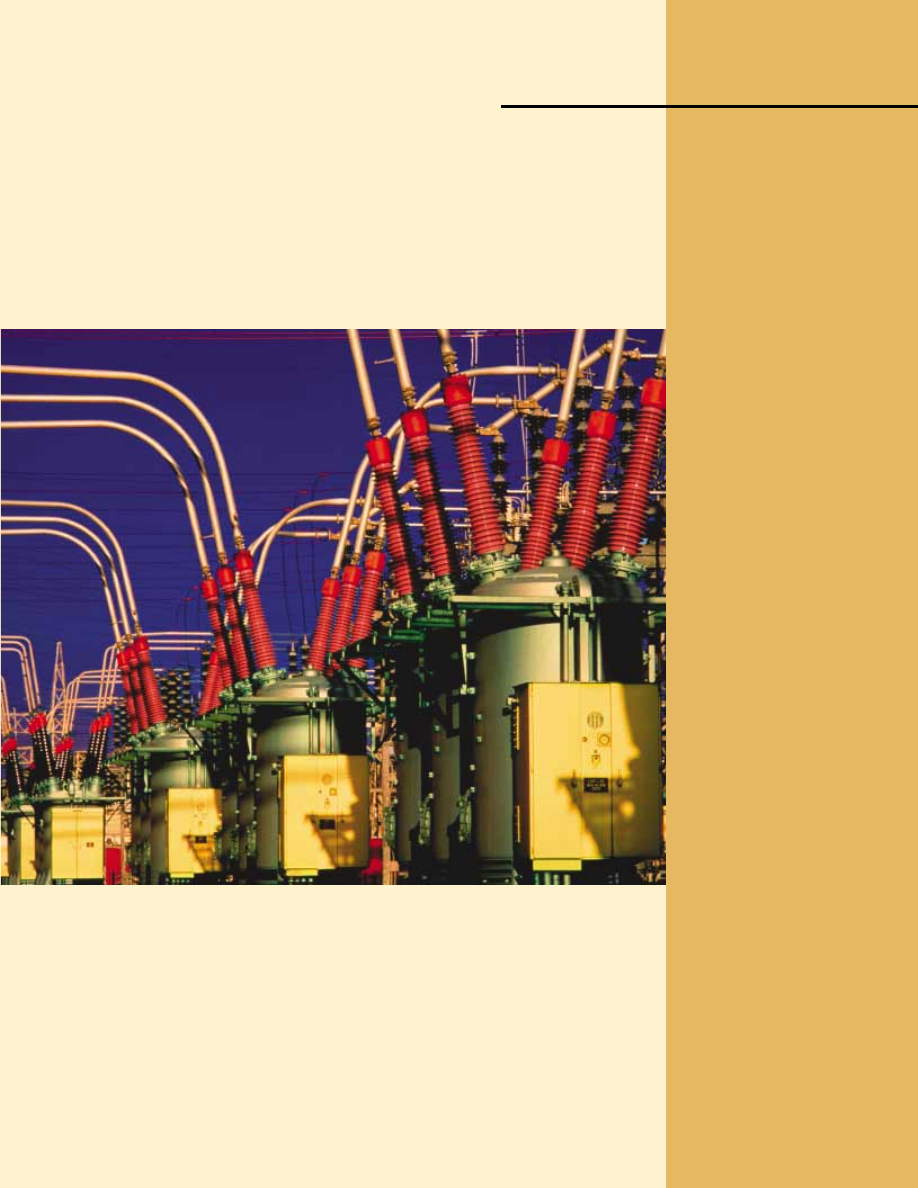Physics For Scientists And Engineers 6E - part 259

1033
Alternating Current Circuits
C H A P T E R O U T L I N E
33.1 AC Sources
33.2 Resistors in an AC Circuit
33.3 Inductors in an AC Circuit
33.4 Capacitors in an AC Circuit
33.5 The
RLC
Series Circuit
33.6 Power in an AC Circuit
33.7 Resonance in a Series
RLC
Circuit
33.8 The Transformer and Power
Transmission
33.9 Rectifiers and Filters
▲
These large transformers are used to increase the voltage at a power plant for distribution
of energy by electrical transmission to the power grid. Voltages can be changed relatively
easily because power is distributed by alternating current rather than direct current. (Lester
Lefkowitz/Getty Images)
Chapter 33